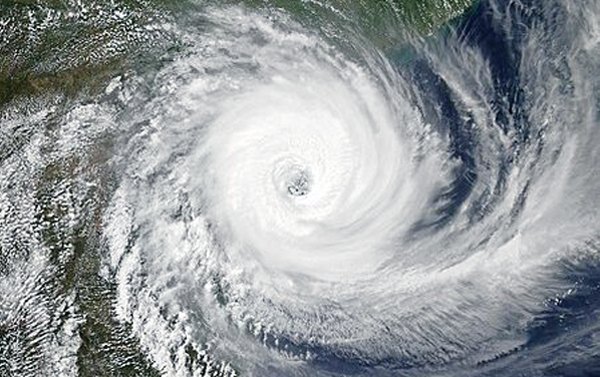 Cyclone Kenneth was the strongest hurricane ever to hit Africa and only the fourth on record. It plowed into Mozambique on April 21 with 143 mph winds.
Cyclone Kenneth was the strongest hurricane ever to hit Africa and only the fourth on record. It plowed into Mozambique on April 21 with 143 mph winds.
Then, just three weeks later Cyclone Ida crashed into the same place! With winds of 127 mph it refused to move like Kenneth or normal hurricanes. It sat over Mozambique for more than three weeks wrecking untold destruction.
Like drunken gluttons these two disasters seemed to have sucked away Africa’s moisture for years to come. Terrible unpredicted droughts have popped up all over the subcontinent. My safari just ended in Botswana, a thousand kilometers west of where the hurricanes struck. It was a mess, an utter drought.
African agriculture has tumbled. Local currencies have tanked. Mozambique and surrounding areas of Zambia and Tanzania have been utterly destroyed. Millions remain displaced.
This is not the screenplay for an apocalyptic movie. It happened six months ago. The two hurricanes are the worst natural disaster in the history of Africa but unfortunately that record is not expected to stand very long.
I visit southern African parks at least once a year, and my feelings about them haven’t changed in forty years. They lack the drama, the spectacle of East Africa’s wilds. But as I’ve also often pointed out they also safeguard a greater biodiversity than in East Africa.
That, however, may have changed with hurricanes, drought and climate change.
The main difference between East and southern big-game parks is that the former is mostly unmanaged and the latter super-managed.
Southern African conservationists in the main believe that their remaining wildernesses must be minutely pruned and nurtured in a mission to maintain as best possible the greatest biodiversity.
So before man when the balance was struck among millions of animals, plants, birds and insects simply by natural selection, southern Africans concede that man has so greatly altered the ecosystem that natural selection can’t keep up.
Natural selection doesn’t have enough time to work after a mall is built ten miles outside the park, or when river systems are altered for nearby agriculture or more pointedly, when tourist revenues increase as lion populations do.
This is a bold and admirable conservation revelation. Keep in mind: it’s not recent. The acknowledgment that climate change requires proactive human responses for mitigation is at least a century old in South Africa! Stuff that in your snowball, Sen. Inhofe!
So using a much beloved “carrying capacity” formula refined over a century of use, southern African park managers have culled, relocated, replanted and removed thousands of species over the years to maintain the greatest biodiversity possible.
East Africa couldn’t have done this even if it wanted to: it’s so much less developed than southern Africa. There just aren’t the resources to do much beyond anti-poaching.
East Africa big game parks are the wild west compared to southern Africa’s.
“Whatever is, is” is the de facto mission of East Africa. From a tourists point of view, mine included, there’s no question that this Hands-Off policy renders greater thrills and lasting memories than possible in super regulated southern Africa.
But I’ve often worried these highs are too intoxicating and terribly short-sighted. Won’t the whole world one day be pretty developed? Scientists regularly warn that less managed ecosystems have a greater potential for catastrophic disaster.
Whether from man himself or disease, a sudden decline in one species could derail an entire ecosystem that is less diverse and minutely protected than those in southern Africa.
But what about from the slightly slower moving effects of climate change?
Hurricanes Kenneth and Ida notwithstanding, equatorial areas are getting more rain and non-equatorial areas are getting more droughts. “More” does not mean “more,” exactly but I don’t know how else to put it.
The droughts in the equatorial areas are fewer and shorter-lasting, but much more extreme. The lesser rains in the non-equatorial areas nevertheless fall as torrential floods.
For human populations that are able to mitigate these extremes the disruptions cause about equal pain in both places. But in uninhabited wildernesses not so. More water is better than less water, however it may arrive.
If all that’s true then I think keeping man’s hands off nature in the long run will render greater biodiversity than trying to tamper with it, now. Super computers notwithstanding.
There was no scientific basis for my love of East Africa over southern Africa. A conscientious conservationist should be able to get as great a thrill from saving the red hartebeest or wattled crane from extinction as I might plowing off-road into the unknown eastern Serengeti.
It was just a gut reaction. But I think that’s what we want from Mother Nature, now, when the next hurricane hits, the next devastating drought begins. If only man will give Her some space.